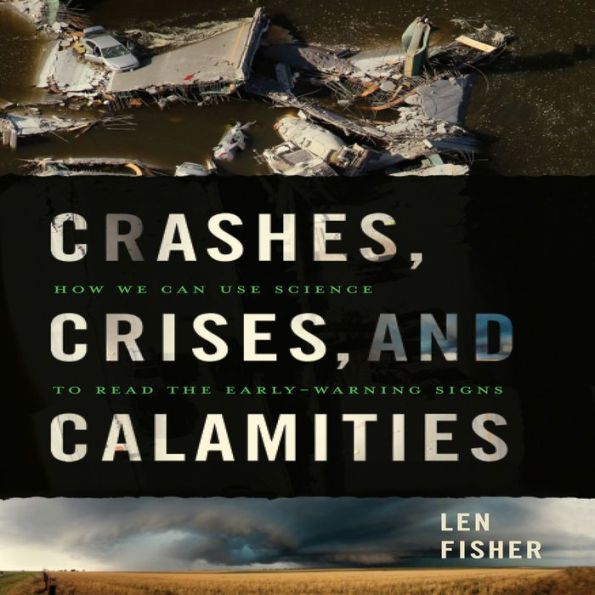From the Publisher
Scott M. Cooper, MIT Research Affiliate, co-author of Coolhunting
“With this third book in his trilogy of exploration into how to address some of society’s most complex and vexing problems, Len Fisher challenges us to rethink how science and mathematics is used in what might be called ‘crisis prediction and management.’ This book is getting me to rethink some of my own work.”
Simon A. Levin, Moffett Professor of Biology, Princeton University; author ofFragile Dominion
“Fisher is a master story-teller, making difficult scientific concepts seem simple through elegant exposition. Crashes, Crises, and Calamities addresses the challenge of disaster prediction in socio-economic, ecological, and physical systems by a brilliant and engaging integration of diverse scientific perspectives.”
Ian Stewart, author of Professor Stewart’s Cabinet of Mathematical Curiosities
“Len Fisher is a natural storyteller, and his tales about the mathematics of crashes, crises, and calamities keep the pages turning. A great way to find out what the world’s mathematicians are doing to forecast and prevent disasters of all kinds.”
Yaneer Bar-Yam, Professor and President, New England Complex Systems Institute
“Excellent discussion of the most important problem of our time.
Kirkus Reviews
Popular-science writer Fisher (The Perfect Swarm: The Science of Complexity in Everyday Life, 2009, etc.) examines the search for warning signals preceding disastrous events.
The author enthusiastically probes into the method of detecting disasters, starting with the reading of heavenly events, through oracles and seers, and up to today's computer models. First, he writes, it is worthwhile to get a handle on the nature of change, primarily through the agencies of positive and negative feedback. Positive feedback reinforces change and can amplify it as the reinforcement increases—i.e., an avalanche. Negative feedback dampens change as "a restoring mechanism that works to push a system back toward its original state"—i.e., righting the course of a careening vehicle. The flux of positive and negative is everywhere: action and reaction, deviation and correction, process and counter-process. After an enjoyable discussion of the laws of motion and elasticity, Fisher delves into the idea of prediction through models, "simplified pictures that capture the essence of a situation and let us see through the complexities." Though models are prey to all manner of inadequacy and corruption—groupthink, selective data input, blind ignorance—well-tempered models have advanced the reading of weak signals broadcast before crises are unleashed. These include greater- than-normal fluctuation and variance (seen in everything from coral reefs to the stock market), a critical slowing down and changes in spatial patterns and distribution. With the degree of complexity involved, writes the author, "[s]cience can't make absolute predictions, no matter how much politicians and journalists demand it"—though these notes toward understanding are fascinating and testable.
The future may seem murky, but Fisher deploys both theoretical precision and sane intuition to permit a little light around the edges.



